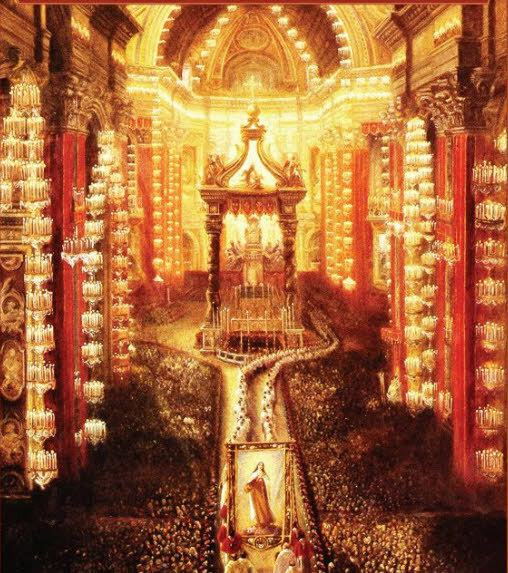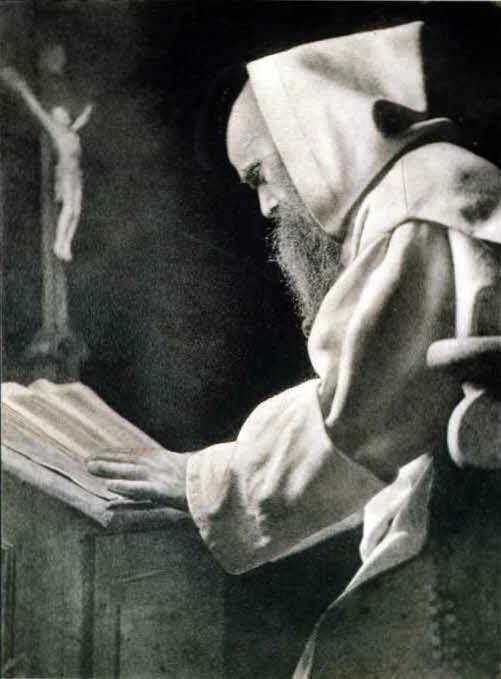
What is meant by Ambiences, Customs, Civilizations?
See a listing of Ambiences, Customs, and Civilizations written by Plinio Correa de Oliveira.
In Revolution and Counter-Revolution Plinio Corrêa de Oliveira writes that:
“Given that God established mysterious and admirable relations between, on the one hand, certain forms, colors, sounds, perfumes, flavors and, on the other, certain states of soul, it is obvious that, through the arts, mentalities can be profoundly influenced and persons, families and peoples can be induced to form a profoundly revolutionary state of spirit.”1
This passage is fundamental for understanding the special contribution of Plinio Corrêa de Oliveira to the magazine Catolicismo in the column “Ambiences, Customs, Civilizations”, whose extraordinary importance was not understood by everyone.
The ambience is the harmony that results from the affinity of various beings gathered in the same place, and it exercises a profound influence on men.
“Men formed ambiences in their image and likeness, ambiences in which their customs and civilization are reflected. But the opposite is also true to a large extent: the ambiences themselves formed, in their image and likeness, men, customs and civilizations”.2

Proof of the importance of the ambience for the balanced development of natural and supernatural life is constituted by the wisdom with which God organized the great ambience called creation in which we are immersed, formed by the living beings who surround us: plants, animals, and which has at its head man, the image and likeness of God.
The interpretation and comments of the physiognomy of exceptional men, saints or revolutionaries, in this sense, were a constant note of the thought of Plinio Corrêa de Oliveira. In fact a man’s way of being is expressed in his physiognomy, in his behavior, in his features and even in his clothes, whose change in history is linked to the change of human personalities and types. “Society, as it were,” Pius XII affirmed “speaks with the clothes it wears; with its clothes it reveals its secret aspirations and it uses it, at least in part, to construct or destroy its future”.3
In turn, the Brazilian thinker notes:
“If clothing should be in accordance with the user and with the circumstance in which it is used, there must be a harmony between a man’s eminence and the eminent position he has attained. But God does not only have eminent men as children. Every human creature, no matter how modest, has an inherent dignity that is natural and unalienable. And even more so, immeasurably so, is the dignity of the least, the least noticed son of the Church, as a Christian, that is, as one baptized, as a member of the Mystical Body of Our Lord Jesus Christ.”4
The same applies for art, for urban planning, for architecture which are the result of a group of ideas, tendencies, aspirations and psychological attitudes. He counters the ancient medieval order, which expresses the harmony of scholastic philosophy,5 with the modern Babel.

Canonization of St. Thérèse of the Child Jesus, in St Peters Basilica (Rome).
“No, there is no contradiction between one order of values and another, except in the mind of the egalitarian, servants of the Revolution. On the contrary, the Church shows its sanctity precisely because with equal perfection, with the same supernatural genius, it knows how to organize and stimulate the practice of virtues that shine in the obscure life of the monk and those that sparkle in the sublime ceremonial of the Papacy. Even more than this, one balances the other. We could almost say that one extreme (in the good sense of the term) compensates the other and is reconciled. The doctrinal basis where these two holy extremes meet and harmonize is very clear.

“God, Our Lord, gave creation to us to serve as a means to reach Him. Thus, culture and art, inspired by Faith, emphasize the beauties of irrational creation and the splendors of the talent and virtue of the human soul. This is what is called culture and Christian civilization. In this way, men are formed in truth and beauty, in the love of the sublimity, of hierarchy and of order that reflect in the universe the perfection of Him who made it. Thus, creation in fact helps towards our salvation and the divine glory. But, on the other hand, they are contingent and ephemeral. Only God is absolute and eternal. It is our duty to remember this. This is why it is good to keep a distance from created beings so that by despising them we only think of the Lord. According to the first way, that is, by considering everything creation is, we arrive at God. According to the second, we arrive at God by considering what it is not. The Church invites her children to go by either path simultaneously, that is, by considering the spectacle of its pomps as well as by the abnegation that only She knows how to inspire and to effectively bring about”.6
Ambiences, Customs, and Civilizations:
#5 -- Painting the Human Soul
#6 -- Two Paintings, Two Doctrines
#7 -- The Christian Spirit and the Pagan Spirit Manifested in Architecture
#9 -- Two Ways of Looking at Country Life
#13 -- Two Styles, Two Ways of Being
#17 -- Spiritual Decoration vs. Materialist Decoration
#19 -- Barbarians, Pagans, Neo-Barbarians, Neo-Pagans
#20 -- Clothing, Mirror of an Epoch
#21 -- Two Feminine Ideals
#22 -- Small Symptoms of a Great Transformation
#23 -- Old Age: Decrepitude or Glory?
#24 -- Can Only Sacred Art Be Christian?
#25 -- Sacred Art and Naturalism
#28 -- Equalizing Everything: A Mania, Not a Necessity
#30 -- True Sanctity Lies in Strength of Soul and Not in Sentimental Softness
#31 -- Catholic Universality and Pagan Internationalism
#32 -- The Machine, Crude and Deformed Idol of a Materialistic World
#33 -- Dignity and Distinction for both Great and Small
#35 -- Doctrine and Art: A Connection that the Communists Understand
#38 -- Being Modern: Apostasy or Sacred Obligation?
#41 -- Is the Guardian Angel Less Intelligent than the Devil?
#42 -- Two Ideals: Law and the Machine
#44 -- Dignified Pride Is the Harmonious Complement of Humility
#48 -- Regionalism, Tradition and Good Taste
#52 -- Refinement without Weakness, Strength without Brutality
#53 -- Love and Fear in Christian Piety
#61 -- Regal Splendor and Popular Comfort
#72 -- Was Youth Made for Pleasure or Heroism?
#73 -- Pagan Manliness and False Christian Patience
#78 -- True Glory Can Only Be Born of Pain
#89 -- The Devil's False Promise of Happiness
#97 -- Do Public Awards and Punishments Dignify and Stimulate or Corrupt and Humiliate?
#104 -- The Grandeur of the King Dignifies the Cook
#108 -- The Very Rich Moral Significance of Simple Household Objects
#113 -- Spiritual Richness in the Common Life of the People
#114 -- "Non in Commotione Dominus" - God is Not Found in Agitation (3 Kings 19:11)
#119 -- The Library: Just a Place for Books or also a Symbol of the Dignity of the Mind?
#121 -- Three Faces of the Revolution
#128 -- East and West: Wise Interpenetration of Values
Notes:
1) P. Corrêa de Oliveira, Revolution and Counter-Revolution, p. 63.
2) P. Corrêa de Oliveira, “Sêde prudentes como as serpentes e simples como as pombas”, Catolicismo, no. 37, January 1954.
3) P. Corrêa de Oliveira, “Dignidade e distinção para grandes e pequenos”, Catolicismo, no. 33, September 1953.
4) P. Corrêa de Oliveira, “O espírito cristão e o espírito pagão manifestados pela arquitetura”, Catolicismo, no. 7, July 1951.
5) Cf. Erwin Panofsky, Gothic architecture and Scholasticism, Latrobe, Archabbey Press, 1951.
6) P. Corrêa de Oliveira, “Têm os simbolos, a pompa e a riqueza uma função na vida humana?”, Catolicismo, no. 82, October 1957. cf. also, on the subject of the ceremonial of the pontifical power, the two studies “As cerimonias da posse de Eisenhower à luz da doutrina católica”, and “Por que o nosso mundo pobre e igualitário se empolgou com o fausto e a magestade da coroação?”, Catolicismo, no. 27, March 1953, and no. 31, July 1953.

